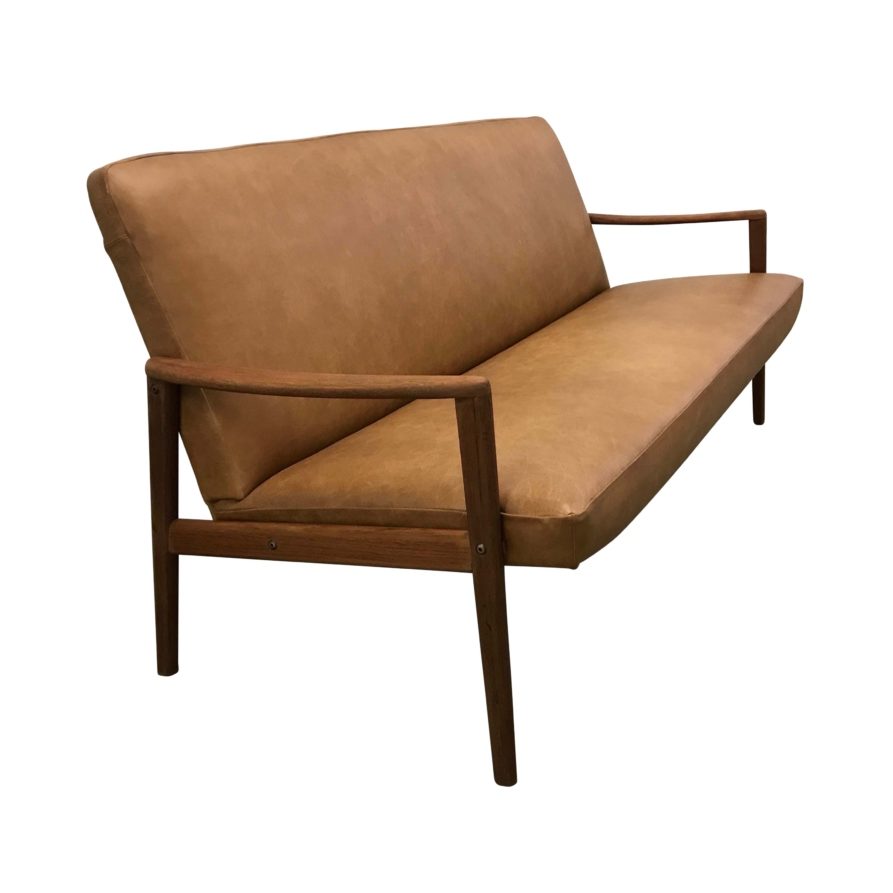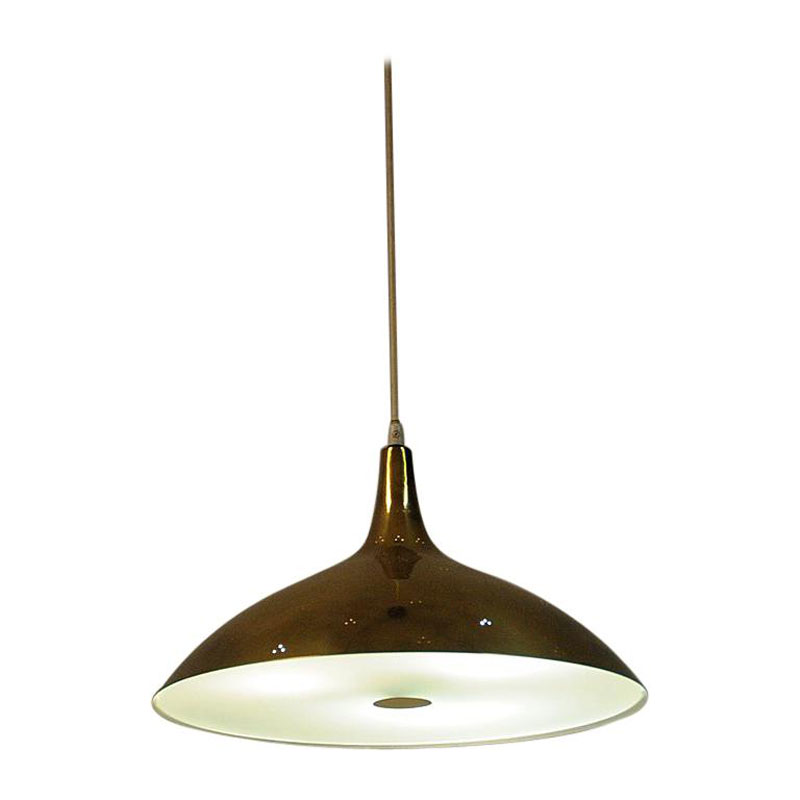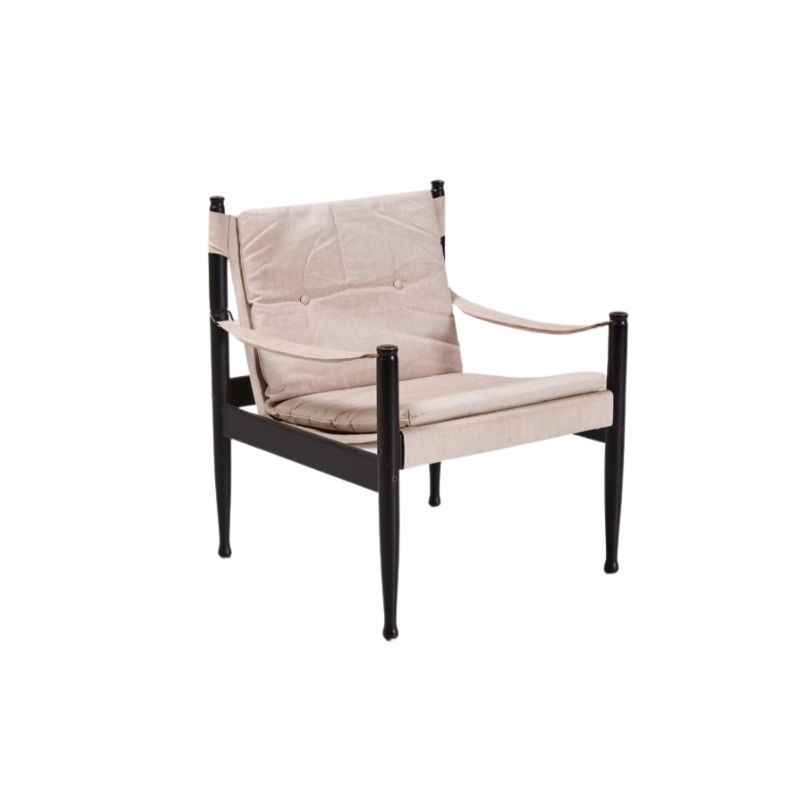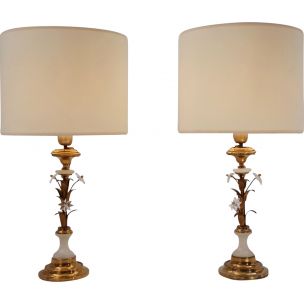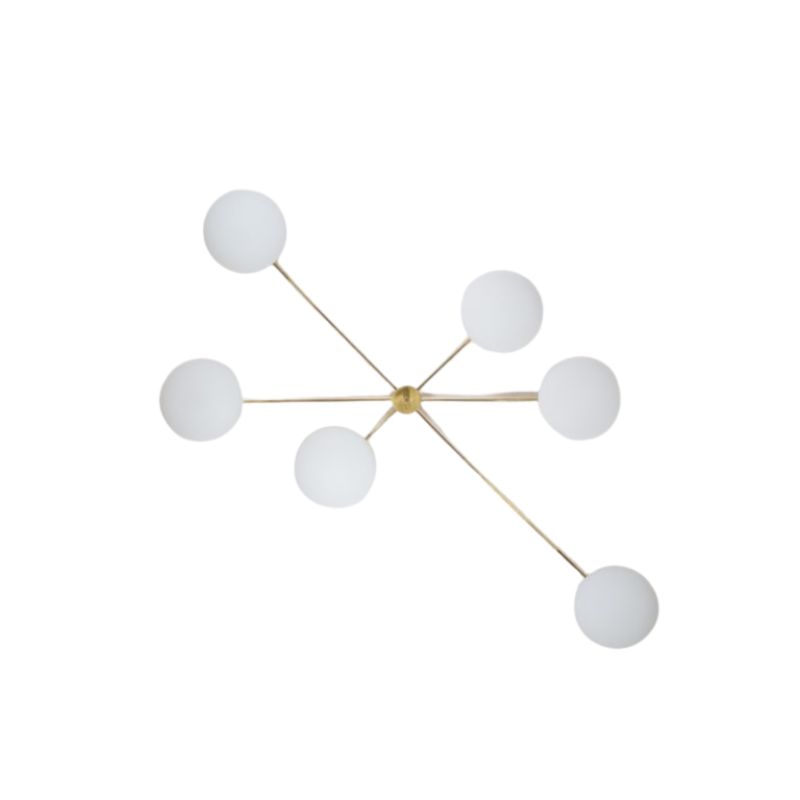I bought the Mogens Kold couch, it will need to be reupholstered which will happen when the right fabric comes turns up. In the mean time the foam will need to be replaced as I use the old cushion covers. I've never bought foam for couch cushion and was wondering if anyone had any pointers? Should the density be the same for both the seat and back?
The seat foam should always be a firmer density than the back, otherwise it'll feel like the back is too firm or the seat is too soft. When you sit, most of your weight is on the seat cushion. The tautness of the seat webbing will play into that somewhat too. If these are just temporary cushions, just go for firm foam for the seats and one level less dense for the backs. You might even want to go with 2 levels softer for the backs if they are the same thickness as the seat---a 3" thick soft foam feels a bit firmer than the same density in a 2" thickness. If this is only for short term, I wouldn't even bother hunting for the highest quality urethane foam.
When you are ready to redo them for real, consider latex foam. It costs a lot more but the comfort and lifespan are worth it.
Urethane foam was put into major use by the furniture industry in the mid-60's at the earliest, maybe later than that--I can't remember now. Latex foam was actually the inexpensive alternative to coil springs, I think. It also made the sleek, lighter profiles of Danish style furniture possible because coil springs require a heavier frame. With a foam cushion, all you need is good elastic webbing on the seat deck.
Also, latex foam wasn't super expensive back then! I don't know when the price went up so steeply, or why. It's made from sap from rubber trees and I don't think the process kills the tree. Maybe a lot of foam companies switched over to urethane because it was so much cheaper to make and now only a few retain the equipment needed to make latex foam (and entirely different process).
Collecting latex sap from rubber trees does not kill the tree. I am no expert on the economics of latex, but I know that there are certain uses like auto tires that require a certain amount of latex for its superior characteristics. So that sort of competition in the 50s and 60s probably grabbed a lot of the supply.
So, Spanky, I think your guess that urethane foam is just cheaper and then the economics moved away from supplying latex foam so it shot up drastically in price. If it weren't used for high end mattresses and mattress toppers, it would probably be impossible to get these days.
I believe that the Danes also custom molded many of their latex cushions instead of using sheets of it. This happens to be something that is comparably easy with latex foam.
So many of the iconic danish designs that had fluid curves with changing thickness foam everywhere were molded and then applied to a frame. In other words a significant part of the design was following the industrial capabilities. These same things are very hard to replicate now with sheet foam.
Even something as simple as a cushion for the Papa Bear was made out of custom molded latex foam and the tapering edge was easily achieved. It is possible to duplicate it now, but it takes much more artistry.
Very interesting. I'll admit that I haven't given the shape/shaping of what goes between the fabric and frame too much thought. Never really thought of the foam as being such an important part of some pieces of furniture!
I took some close up photos of the wood the couch is made from. Is it teak? It seems darker than any of the teak I have owned.
If you need any help, please contact us at – info@designaddict.com



